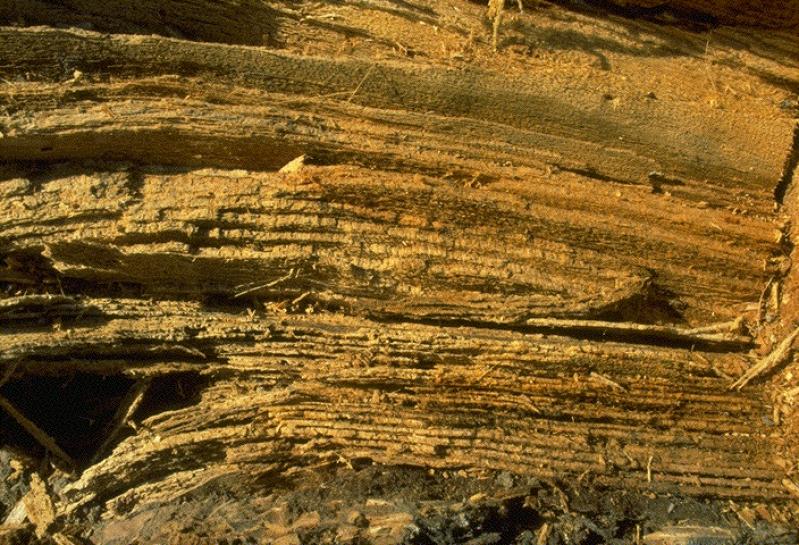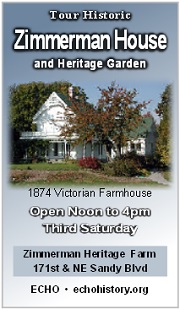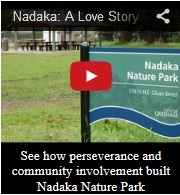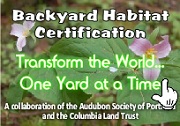Laminated Root Rot and Nadaka Nature Park: Managing a Hidden Killer
 Laminated Root Rot. Click to enlarge |
Laminated Root Rot and Nadaka Nature ParkAbel Gebrezgi and Jim Labbe |
INTRODUCTION
Laminated root rot (LRR) is a fungal pathogen, Phellinus weirii, also known as yellowing ring rot. (LLR gets its name from the lamination of the decayed wood (see photo above). This fungus is widespread in Southern British Columbia, Washington, Oregon, northern California and western Montana.). It is one of the most damaging root diseases amongst conifers, especially firs and cedars, in the Pacific Northwest. Douglas fir, Mountain hemlock, Western hemlock, Grand fir, and Pacific silver fir are highly susceptible to infection by this pathogen. Pine species like Western white pine and Ponderosa pine and larch are more resistant to it while hardwoods are immune. The fungus was first discovered in 1914, on Western red cedar in Idaho. The first reported case in Douglas fir was in 1940, at Cowichan Lake, British Columbia.
|
BIOLOGY |
 Click to enlarge |
After initial contact with a living root, the mycelium grows on the bark, extending only a few inches into the surrounding soil. The mycelium penetrates the host through the injured bark and advances along newly infected roots. Symptoms include crown yellowing and thinning, distress of cones, red-brown staining of outer heartwood, and separation of annual rings. Less discernible is the root rot which eventually decays the roots, destabilizes the tree, and leads to death and toppling. In addition to the loss of mature trees within a stand, LRR creates potential hazards from tree fall especially in small urban parks. The number of cases of the LRR disease has increased substantially with the presence of fire suppression and resulting dominance of Douglas-fir and Grand fir.
INDIAN HENRY CASE STUDY
During the summer of 2011 four large Douglas Firs infected by LRR toppled over in Indian Henry Park. As a result, this popular campground along the Clackamas River had to be closed for over a year. The Indian Henry Park case study illustrates the potential consequences of not actively managing LLR in an urban park.
MANAGEMENT OF LAMINATED ROOT ROT
The most effective way of managing the LRR is to remove the infected trees. Removal prevents the spread of the pathogen from root to root. Another way to manage or treat the LRR, is to plant immune hardwoods or resistant conifers. It is very difficult to entirely eliminate LLR from a stand so management and monitoring needs to be ongoing and long-term.
 Click to enlarge |
NADAKA URBAN FORESTRY SERVICE LEARNING PROJECT |
The project, led by Dale Waddell, provided education and technical training for eight RAHS students and developed a laminated root rot assessment, tree removal and planting plan to treat the infection in Nadaka Nature Park. Oregon Department of Forestry forest pathologist Alan Kanaskie assisted with technical training and site evaluation.
LAMINATED ROOT ROT AT NADAKA
Laminated root rot (LLR) has infected four larger patches and a couple of isolated trees in Nadaka Nature Park. The infected trees include both 1st generation (~80-130 year old) and second generation (~30-60 year old) Douglas firs, with the latter including some western red cedar. LLR appears to be spreading more rapidly among second generation trees due to their more extensive lateral roots. Without human management, this will likely negatively impact long-term tree regeneration within the park and create risk from tree loss.
Among the four large patches infected with LRR, unit 4 is the most severely infected patch. Tree removal and replacement is needed in this area as soon as possible to reduce the spread of LLR and minimize risk of tree loss.
TREE REMOVAL & REPLANTING AT NADAKA
Treating LLR at Nadaka will require some tree removal and replacement in the near-term and active monitoring and management for the long-term. During tree removal the park will need to be temporarily closed off to the public. LLR will be controlled by replacing infected Douglas firs and Western cedars with immune deciduous trees or resistant conifers. This presents the opportunity to diversify forest composition and structure which can benefit wildlife. The logs from larger trees removed will remain in the forest as nurse logs or short wildlife snags, be used in a nature-based play area on-site, or sold to pay for project costs.
More Info
If you’d like more information on laminated root rot at Nadaka contact Lee Dayfield at 503.998.1044.
SOURCES
- 1. Wikipedia, “Laminated Root Rot,”
http://en.wikipedia.org/wiki/Laminated_root_rot - 2. Draft Report on Nadaka Urban Forestry Service Learning Project
Dale Waddell, Wolftree, Inc, June 2013. - 3. Letter to Ric Catron, City of Gresham
Alan Kanaskie, Forest Pathologist
Oregon Department of Forestry, May 4, 2010 - 4. Hagle, Susan. July 2010. Management Guide for Laminated Root Rot, Forest Health Protection and State Forestry Organizations” USDA Forest Service
http://www.fs.usda.gov/Internet/FSE_DOCUMENTS/stelprdb5187461.pdf
Related Content

















